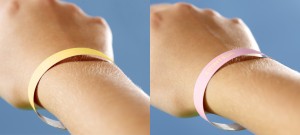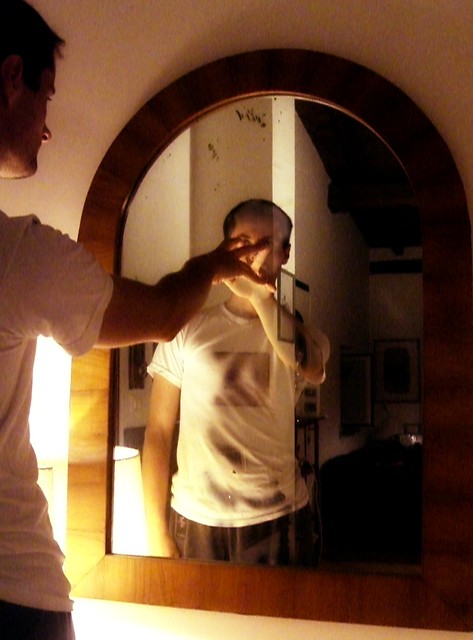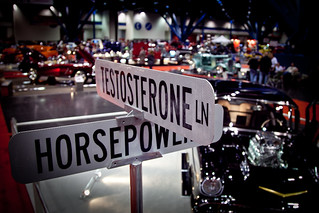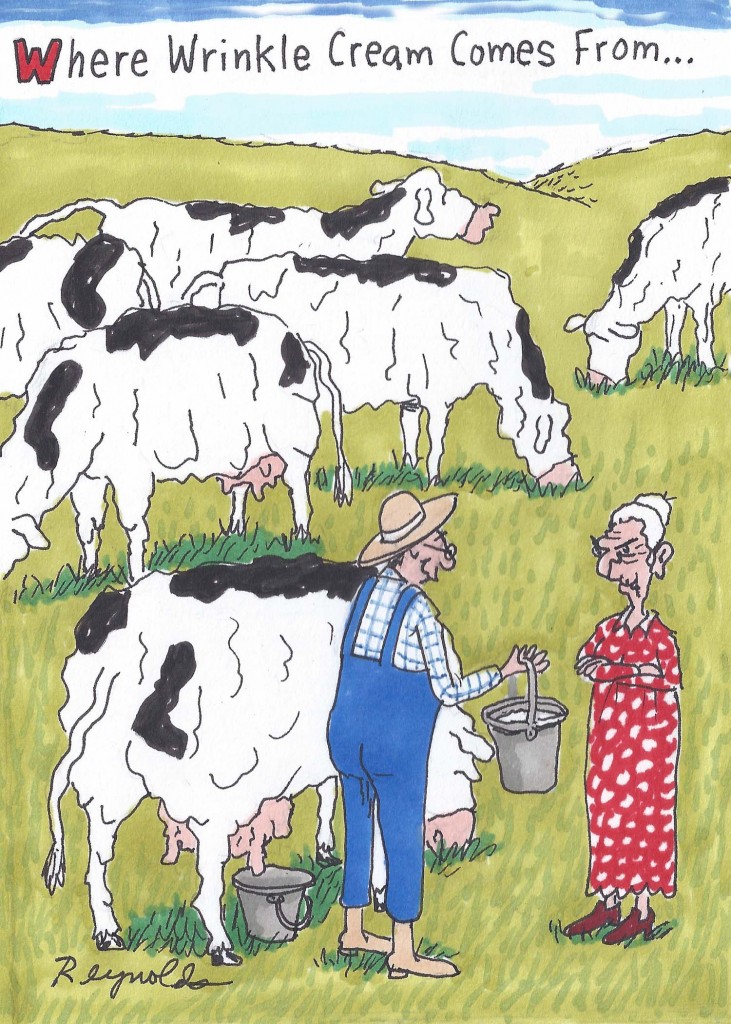Facing up to hair
Apparently, just as many mainstream outlets caught on to the fact that male “hipsters” had fully embraced the idea of thick, luxuriant beards, some researchers are suggesting that “peak beard” may have come and gone. For one beard-oil (yes, that’s a thing) entrepreneur in my city, this may be a tragedy (but given the usual lag in Ottawa catching trends, he’s probably got some time).
But it got me thinking about men and facial hair. I’m not sure we’ve ever lived in a more diverse era of facial hair than we do now — at least in my lifetime. In the 1950s, clean-shaven was the way to go. The sixties brought on long hair for men (with the exception, perhaps, of Merle Haggard or Jim Stafford) and the hippie era. Before I could grow my own facial hair, back in the 1970s, it was all about sideburns and mustaches for most men. Stars like Burt Reynolds, Frank Zappa, Tom Selleck (and even Cheech of Cheech and Chong!) were sporting serious ‘taches.

A photo from the 2012 World Beard Championships. CC-licenced by Flickr user: https://www.flickr.com/photos/rhymeswithsausage/
Then we got to the 80s and 90s, dark times for facial hair aficionados. Yes, Don Johnson brought us the “Miami Vice” look, which included oh-so-carefully coiffed stubble to go with that wrinkly linen jacket. But more of us were trying to figure out how much hairspray to use to get that Flock of Seagulls thing going than trying to figure out how to keep our beards up.
But now? Now, it’s a free-for-all. You’ve got your hipsters. You’ve got your neckbeards. You’ve got your ironic moustaches. You’ve got muttonchops (thanks, Wolverine). You’ve got “urban beardsmen.” There seems to be no “rules” anymore, except, of course, for those men for whom facial hair is part of religious practice (such as Sikhs).
So what’s a guy to do? Well, I’ve got a few rules that are nothing more than my own rules. I’ve had facial hair — either a beard or a goatee — for most of my life. I wear it … because I like it. I didn’t have anyone tell me it was best for my face type, or anything else (Well, my partner, who claims our relationship will end if I go barefaced). I usually keep it pretty neat and clean, because that’s what I like. I have some wee sideburns, but not too much; I don’t keep the goatee stuff too long, because I don’t like that. I keep the moustache quite close too, because one of the things I hate most in the world is having my moustache hairs get in my mouth. But that’s me.
Are there “rules?” Probably not. Use your own judgement. Unless you’ve got crappy judgement, in which case you should use someone else’s. Think about the world you inhabit. Are you a corporate lawyer? A full hipster beard is probably not gonna fly. Are you a bike mechanic? You’ll probably be fired if you DON’T have some sort of extreme facial hair (and multiple tattoos, but that’s another subject). I don’t want to be a downer, but sometimes individual choices can have consequences when they collide with the outside world. I like my facial hair well enough, but if it stood between me and my dream job, I’d consider letting it go.
Like most things in life, what you grow on your face is governed by what you like and what society likes. Find your own balance.
Read MoreSkin cancer, driving and technology
It’s Skin Cancer Awareness month, an important reminder to use sunscreen.
Indeed, according to recent estimates, skin cancer accounts for half of all cancers in the U.S. More than 3.5 million cases of basal or squamous cell skin cancer are diagnosed yearly; these types of skin cancer are generally found on the base or surface of the skin and can be cured if treated early enough. Melanoma — the most deadly of all skin cancers that affects the melanocytes, or cells that create skin pigmentation — accounts for more than 2/3rds of skin-cancer related deaths; this year, more than 76,000 cases are expected to be diagnosed. And, one person dies of melanoma in this country every 57 minutes.
In other words, skin cancer is not something to mess around with.
If you are like me, a child of the 60s and 70s, catching rays meant baby oil and tin foil. My father, who is in his late 80s, grew up on the beach and has spent the last 20 years having patch after patch of skin cancer removed. His body is a veritable skin cancer harvester, and he has even been permanently disfigured due to a botched procedure to freeze cancer cells below the surface of the skin on his nose. He’s lucky; he’s still alive and catching those cancers early enough.
I can’t emphasize it more: wear sunscreen. Moreover, wear it when you are in the car!
A study in last June’s issue of the Journal of the American Academy of Dermatology demonstrates that sun protection while driving is sorely lacking, despite the fact that driving evidently constitutes the largest percentage of total time spent outdoors, more than exercise or gardening. Moreover, on average, the majority of people in this country spend 80 to 100 minutes of their day in their cars.
Mind you, this is a retrospective study, which means that the researchers look back at events that have already occurred; this case, they mailed surveys to 675 patients who had previously attended a surgical clinic for skin cancer. Of all of these patients, 90% had a history of at least one type of skin cancer and 30, of malignant skin cancer.
Ironically? A majority did not believe that they needed to wear sunscreen while driving regardless of whether or not the windows were open or closed, although 53% of people with a prior history of skin cancer thought that they should wear it with the windows open. Real life use of sunscreen was different; about a third of these people reported wearing sunscreen “most of the time,” while only 15% used it while driving. What’s more, about a third of the people who reported wearing sunscreen most of the time while in a vehicle did not apply it to their arms or hands.
Additionally, having tinted car windows didn’t seem to provide additional protection. An equal percentage of people with or without tinted windows developed non-malignant skin cancer (85%); the only difference was the side of the body the skin cancer resided.
Here’s what you need to know:
- Automobile glass does not contribute to skin cancer equally. Important factors include the type of glass, the degree of tinting and the presence or absence of lamination or UV-absorbing film.
- In one study, clear auto glass transmitted 62% of UV radiation whereas dark-tinted glass transmitted 11.4%.
- Windshields are made from laminated glass that allows, on average, 2% transmission of UV radiation. Conversely, your side and rear windows are typically non-laminated and allow up to 80% of UV radiation. This means that the shoulder, arm and hand closest to the window needs to be protected because they are receiving the highest exposure to UV rays.
But, there’s a silver lining too!
Researchers at the University of Strahclyde in Glascow, UK have developed a monitor for preventing risk of overexposure to the sun. The device, which is called “Smartsun” is a waterproof wristband that changes color according to your amount of ultraviolet (UV) radiation exposure.
As exposure increases, the wristband turns from yellow to pink. 
The change in color is created by an acid-release agent that detects UV light and a dye to responds to pH levels.
Smartsun is currently available through UK retailers but global shipping is available through echemist. I don’t know about you but this seems like an easy way to keep track of sun exposure, even while driving.
Don’t mess with skin cancer. Wear sunscreen. And check out Smartsun!
Read MoreRB-X – Does real beauty start with the letter ‘g?’
Dove’s evolving Real Beauty may have done women everywhere a solid by highlighting real skin and real curves. But it appears that the manufacturer is beginning to believe its own hype with the latest iteration: “Is Beauty a State of Mind?”
Does real beauty start with the letter ‘G’ as in, ‘gullible?’
The Dove State of Mind campaign highlights several women of varying ages and ethnicities who are recruited to try the RB-X ‘Beauty Patch.’ For a week, they are asked to apply the patch and keep a daily diary. And imagine this: in simply one week, these Doubting Debbies have blossomed into Boastful Beauties. The rub? There’s nothing in the patch; it’s just a patch. And when they women learn that the patch is a placebo, they each have an epiphany! They were beautiful ‘all along,;’ the patch simply boosted their self-confidence. Oopsie! How could they not have known (blush, giggle, yikes).
Wow, colour me dumbfounded.
Ladies, indeed, it is time to take a step back and redefine the meaning of beauty. While it may be a state of mind (at times), it is certainly not a Dove State.
Read More
Mirror, mirror, on Guyside’s wall…
 I recently came upon a photo of me that was about 10 years old or so. I didn’t think much of it, but then I took a closer look to see if I could spot the telltale signs of aging in it. It was hard. I’m a little heavier now than I was then (about 192 compared to about 185); there are more than a few gray hairs in my facial hair, but not much on top; I couldn’t see the advance of wrinkles.
I recently came upon a photo of me that was about 10 years old or so. I didn’t think much of it, but then I took a closer look to see if I could spot the telltale signs of aging in it. It was hard. I’m a little heavier now than I was then (about 192 compared to about 185); there are more than a few gray hairs in my facial hair, but not much on top; I couldn’t see the advance of wrinkles.
Trust me. I am not Dorian Gray. But I think that guys are able to see exactly what they want to see in mirrors or photographs. A classic Canadian folk song called “Lies” is about a woman confronting her face in the mirror, with one couplet: “She shakes off the bitter web she wove / Gently puts the mirror face down by the stove.” From the outside, at least, I think women look at themselves and see flaws, while men look at themselves and see an idealized version of themselves.
I don’t think I have to argue that for many women, body image is a big problem. But I want to argue that the male tendency to ignore reality isn’t an asset. If we “can’t see” the toll that time and our choices take on our body, then men could be opening ourselves up to health issues.
I was recently part of an online discussion where a mother was talking about how quickly her daughter would look at herself and wonder if she was too fat (this in elementary school!), while the girl’s quite-average-shaped younger brother would come to his mother and demand she demonstrate awe at his huge biceps and muscles! While I suspect that everyone in adolescence is hypersensitive to body issues (why don’t my boobs look like hers, why can’t I get rid of these pimples, why am I 6’1″ and weigh under 140 — that last one was me, by the way), it’s disconcerting to think that even in early childhood, there are already seeds of dissatisfaction with who we are, and the willingness to rely on our fantasy vision of ourselves rather than to simply acknowledge reality.
Since the 1980s, when I was thin enough, as my dad used to say, “to have to run around in the shower to get wet,” I’ve put on about 55 pounds. I needed some of that. But maybe not all of that. Even my idealized eyes can see that. I’ll never be a bodybuilder, never be “musclebound.” Given the raw material, I would have to either become an utter gym rat, or I’d end up using dangerous methods like steroids to achieve some level of muscularity. And I’m not willing to risk my health for an image. I like feeling fit, I like feeling toned. But for me, the “Men’s Health” six-pack or the arms of a pro wrestler aren’t worth it.
But the question then becomes: if you recognize the need for change, then how to make that change. Next week, I’ll be talking about cosmetic surgery for men.
(photo CC-licenced by Flickr user Michele di Trani)
Read MoreGuyside: Getting testy about testosterone
 There’s no doubt that men think about the effects of aging on their bodies. And if there were, a viewing of ads for hair colouring, hair thickening agents, or erectile dysfunction drugs would quickly convince you. You could be a new man!
There’s no doubt that men think about the effects of aging on their bodies. And if there were, a viewing of ads for hair colouring, hair thickening agents, or erectile dysfunction drugs would quickly convince you. You could be a new man!
And as regular Flashfree readers will know, one of the things that’s been touted as a solution to the woes of the aging male is testosterone replacement therapy.
The basic idea is that men may have a condition that’s referred to as “Low T.” And so a gel, a patch, a tablet or an injection may bring you back to a more energetic, athletic, virile condition. The pitch has been made more and more convincingly, by all accounts: an Australian research team found that the sales of testsosterone treatments went from $150 million in 2001 to $1.8 billion in 2012.
That’s a 1200% increase. The Australian research indicated that the amount of testosterone being prescribed far outstripped the incidence of “male menopause” or andropause. So what’s going on? Oh, I suspect there’s a generous helping of vanity involved here.
But if it were simply a matter of making men feel better about themselves, it would just be a waste of money. A growing body of research evidence is suggesting that treating Low T may increase the risk of cardiac events. The most recent, an article from the open-access journal PLOS ONE, suggests a substantial increase in the risk of myocardial infarction — what we normally refer to as a heart attack — with the use of testosterone, for men under and over 65 years of age.
I’m sure there are men with diagnostic criteria that would make testosterone therapy an appropriate choice, with a careful calculation of the risks and benefits. But if my hair’s getting a little thin, if I’m not feeling as “macho” as I once was — do I really want to be using a hormone supplement that could put me at risk of a heart attack?
It’s very easy to succumb to marketing-based pitches that appeal to what we think we need as men. But it’s important for us to not jump at those pitches without thinking about the risks and the benefits carefully.
There was a rush to use estrogen and progesterone to help women with symptoms of menopause several years ago, and then a panic when those therapies were associated with increased cardiac symptoms.
I’m no doctor, and I’m certainly not saying that nobody should be using hormones in this way. But I do think that we should think through ALL of our medical decisions and ensure we’re taking the risks seriously.
(photo: CC-licenced image by Flickr user Ed Schipul)
Read More







